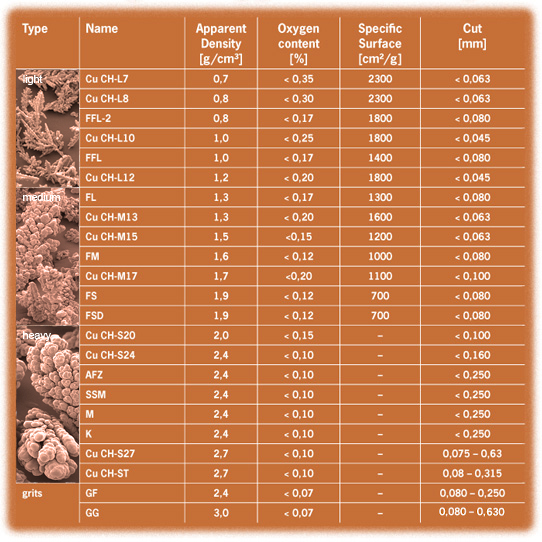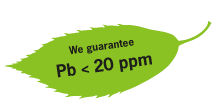
Applications
- Carbon brushes
Whereas the light (AD 0,7-1,2 g/cm3) and medium (AD = 1,3 ÿ 1,9 g/cm3) density ECP are used for carbon brush body, the high density ECP (AD 2,0-3,0 g/cm3) are used as temping grades for fixation of the flexible wire in the carbon brushes.
- Brake and friction lining
- Sintering for bronze parts (as mixtures with tin e.g. 90% Cu + 10% Sn and/or
with other elements) - Additives for sintering of iron powder / mixtures
- Brazing and joining
- Welding electrodes
- Diamond tools
- Chemical industry
- Plastic fillers
- Vacuum switches
- Spark plugs
- Pyrotechnics
| Cu |

Outstanding properties of our electrolytic copper powders (ECP)
High Purity
produced from highly pure copper cathodes (Cu>99,9%) our electrolytic copper powders obtain high purity and thus show best conductivity (electrical and thermal).
Lead free
Due to highly pure raw materials and as we do not use any lead in our process, we can guarantee extremely low lead contents of < 20ppm.
Excellent mixing properties
The dendritic structure makes our electrolytic copper powders very suitable for mixing with other powders (e.g. with graphite powders, tin powders, hard metal powders, cobalt powders, ...). Especially fine powders and/or powders with higher specific density can be kept between dendrite arms.
Excellent pressing properties
With electrolysis there is no quenching of a melt and the free growing of dendrites according to crystallographic orientations forms a rather soft material suitable for pressing. The dendritic structure leads to a clamping effect, so high green strength can be obtained.
Excellent sintering properties
Due to the high surface our electrolytic copper powders have a high sinter activity and starting with high green strength also high sintered strengths can be achieved.
In sintering mixtures (e.g. 90%Cu + 10%tin) the dimensional change of the sintered part during sintering can be adjusted by the use of electrolytic copper powders.

